Where are the Cincinnati Southern Railway tracks? From Queensgate to Ludlow and beyond
Editor's note: This story has been updated to note that the Ludlow depot was torn down in 1972, not turned into a museum.
Here’s what will change if Cincinnatians pass Issue 22 next month: The city will no longer own a rail line and the sale proceeds will more than double the city’s annual budget for infrastructure work.
Here’s what won’t change: Where Norfolk Southern trains travel in Greater Cincinnati.
Whether Issue 22 passes or not, the route for what’s been the Cincinnati Southern Railway since 1880 will still start in Cincinnati’s Queensgate neighborhood and end in Chattanooga, Tennessee.
Bridge cost $811K in 1877; $3.5M in 1922
The northern-most point of the 337-mile line is Gest Street Yard, located just north of the Norfolk Southern building at 1276 W. Eighth St. Norfolk Southern trains run on the CSR lines – operated by a Norfolk unit called Cincinnati New Orleans and Texas Pacific Railway.
The trains come away from Gest Street on elevated tracks that pass over Eighth Street, then U.S. 50, then the Ohio River.
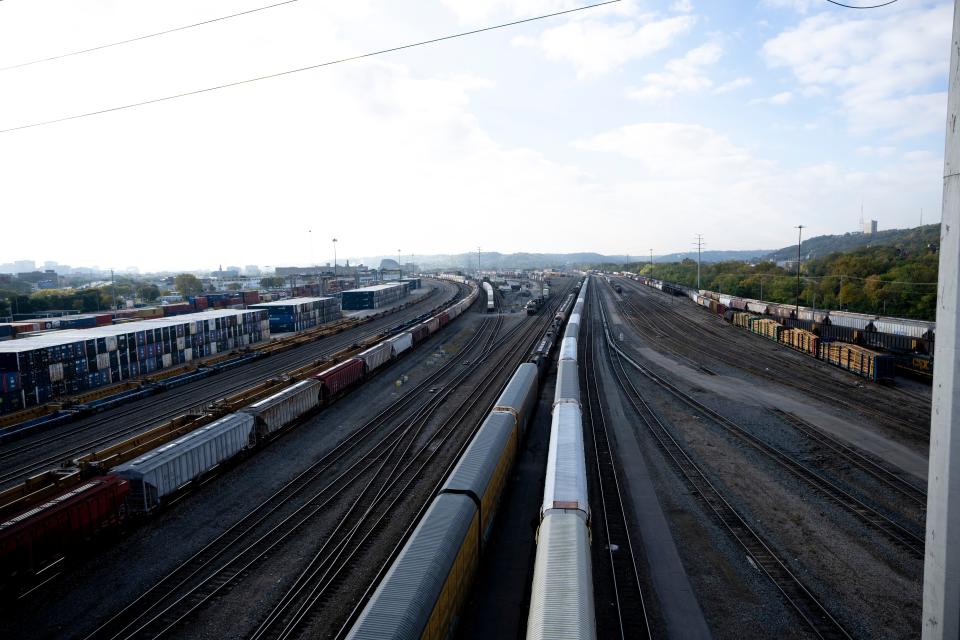
The train-only bridge over the Ohio, owned by CSR, is just west of the Brent Spence Bridge. Called the Cincinnati Southern Bridge, it was built in 1877 for about $811,000 and replaced in 1922 for $3.5 million.
(Those price tags, in 2023 dollars, would be $24 million for the original bridge and $64 million for the replacement. The rail line itself cost $18 million when completed in 1880. That would be $554 million today.)
The full span of the bridge – 3,240 feet in total – is visible from the overlook in East Price Hill’s Mount Echo Park.
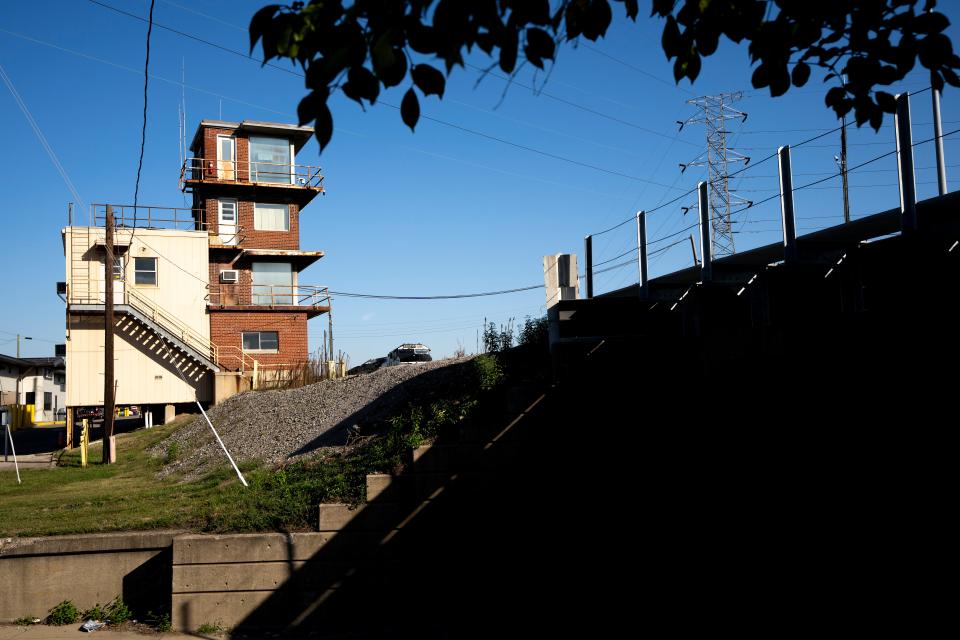
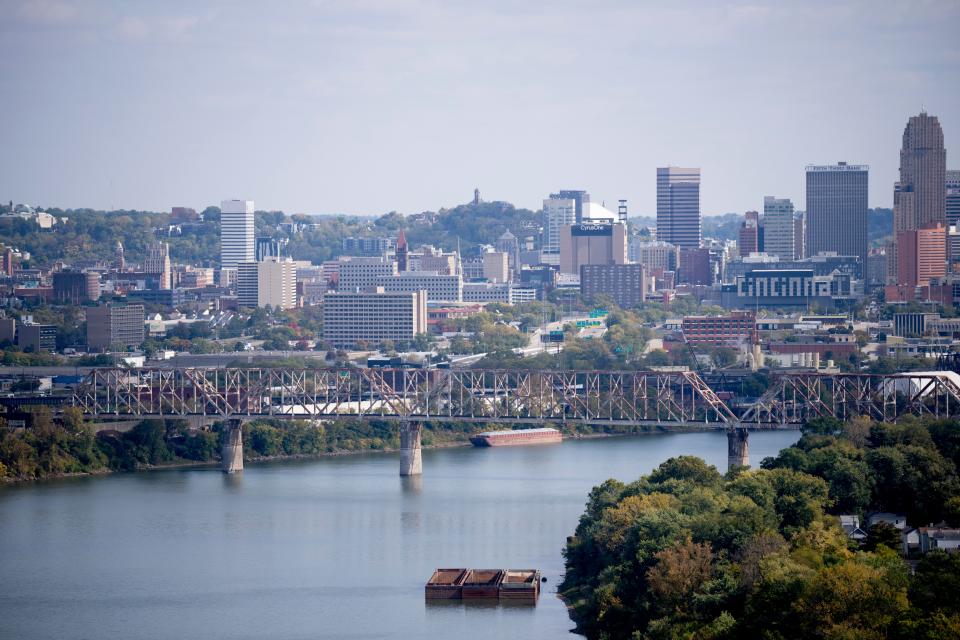
Ludlows were 'the deciding factor'
Cincinnati Southern Railway tracks drop to the ground in Ludlow, Kentucky, and pass behind the Ludlow Heritage Museum. The Ludlow Trainwatching Platform there offers another good look at the Ohio River bridge to the north, now half white/gray paint and half rusted steel.
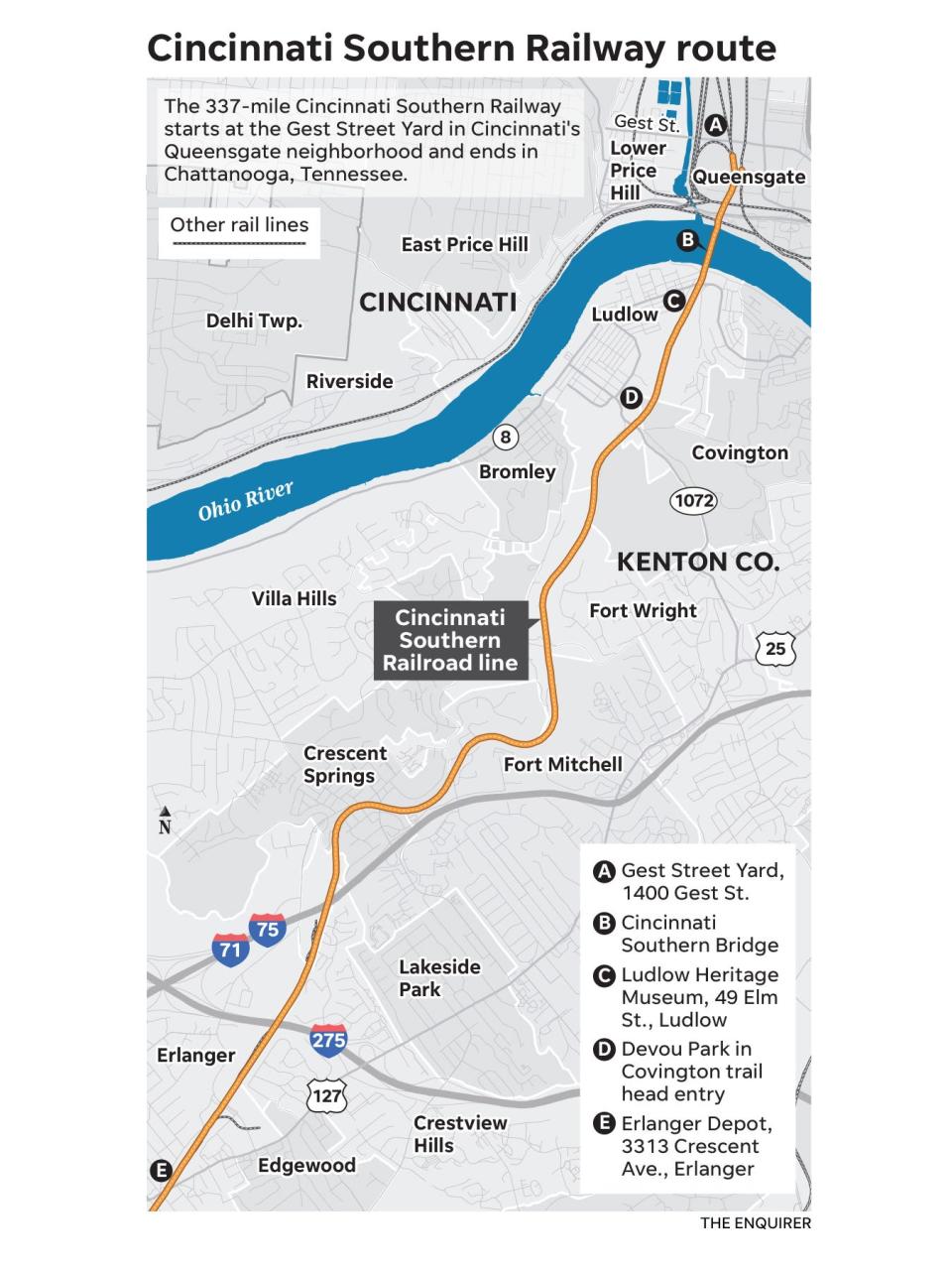
Ludlow competed against Covington for its stop on the Cincinnati Southern, according to plaques on the platform.
“The Ludlow family provided the deciding factor,” one says, noting the family’s prominence as church-builders and landowners.
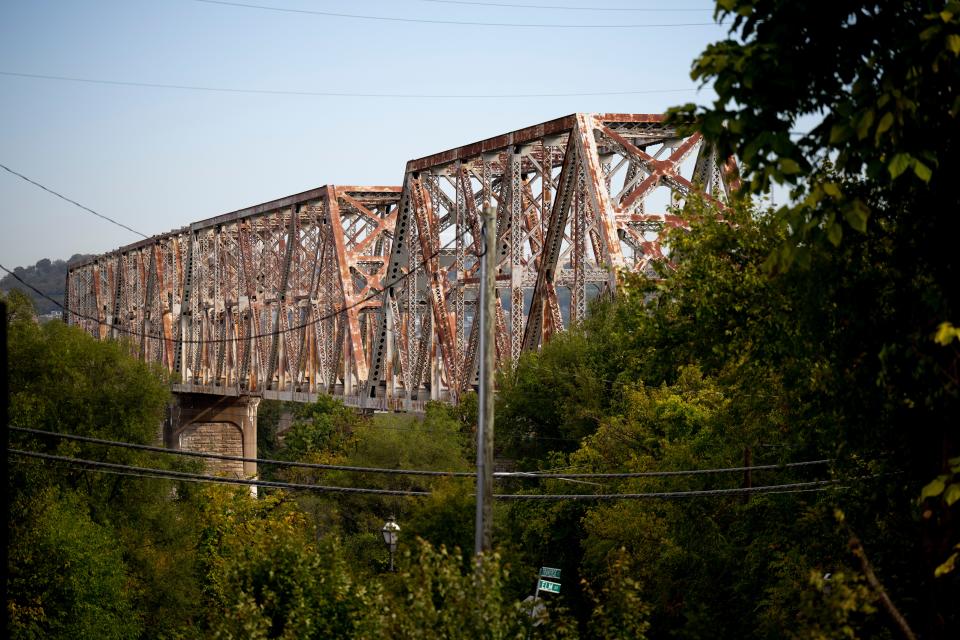
But after World War II, with long-haul trucking on the rise, Ludlow’s place as a railroad town began to fade.
The once-bustling Ludlow depot was demolished in 1972, with the museum and trainwatching platform now across the tracks from where it once sat.
“Many still remember the glory days of the Cincinnati Southern in Ludlow,” a marker reads.
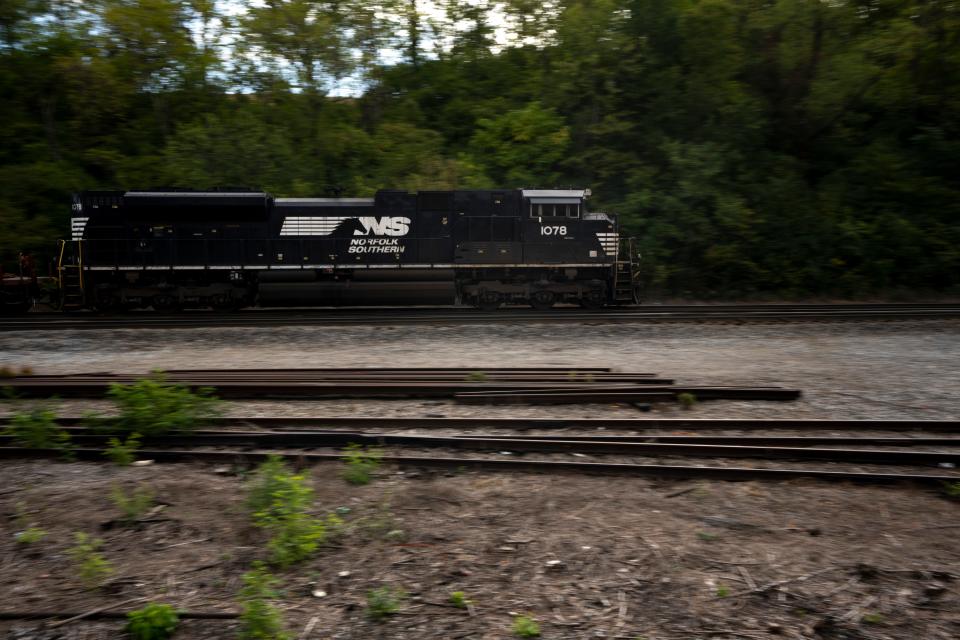
High rise over Devou Park trails
From Ludlow, Cincinnati Southern tracks run along the western edge of Covington’s 700-plus-acre Devou Park.
They lift off the ground to elevated platforms at least three times through Devou – to pass over Deverill Street/Sleepy Hollow Road, then near a trailhead on the northwest side, then again to cross Amsterdam Road.
Near the trailhead, leading to paths for mountain bikers and hikers, the platform towers some 65 feet off the ground, the black paint at its base decorated with graffiti.
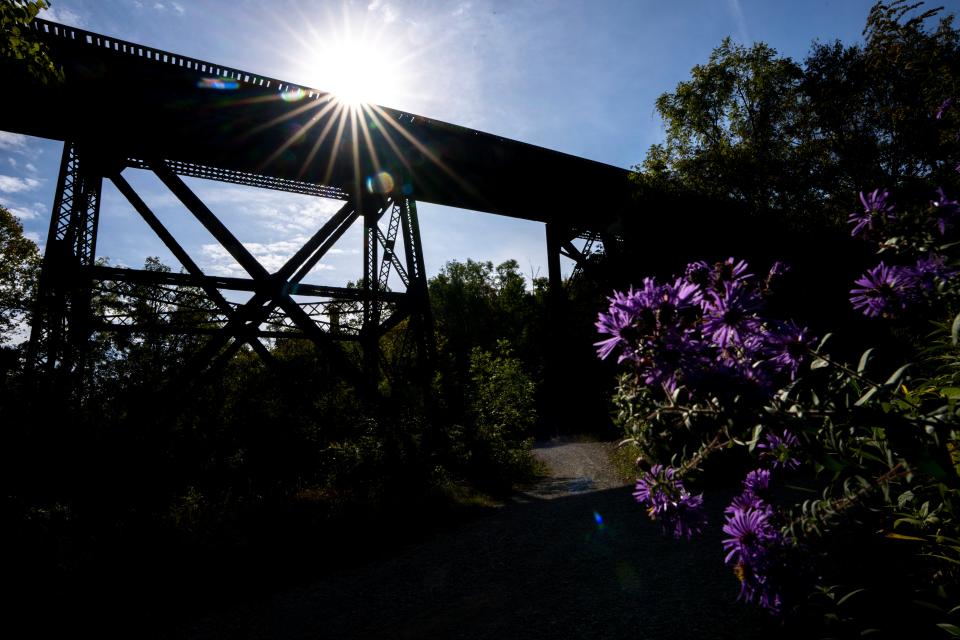
Erlanger is 'last wood depot'
From Devou and Covington, the tracks stay west of Interstate 71/75 as they pass through Crescent Springs, then travel under those interstates, and then rise over Interstate 275 on elevated tracks.
Continuing to head south, the tracks follow Dixie Highway (U.S. 25) after passing across Stevenson Road in Erlanger; under Garvey Avenue and across Main Street in Elsmere; under New Buffington Road and onto an elevated crossing over Industrial Road in Florence; under Richardson Road in Independence; across Totten Road and under Mount Zion Road, back in Florence; and under Maher Road and across East Frogtown Road in Walton.
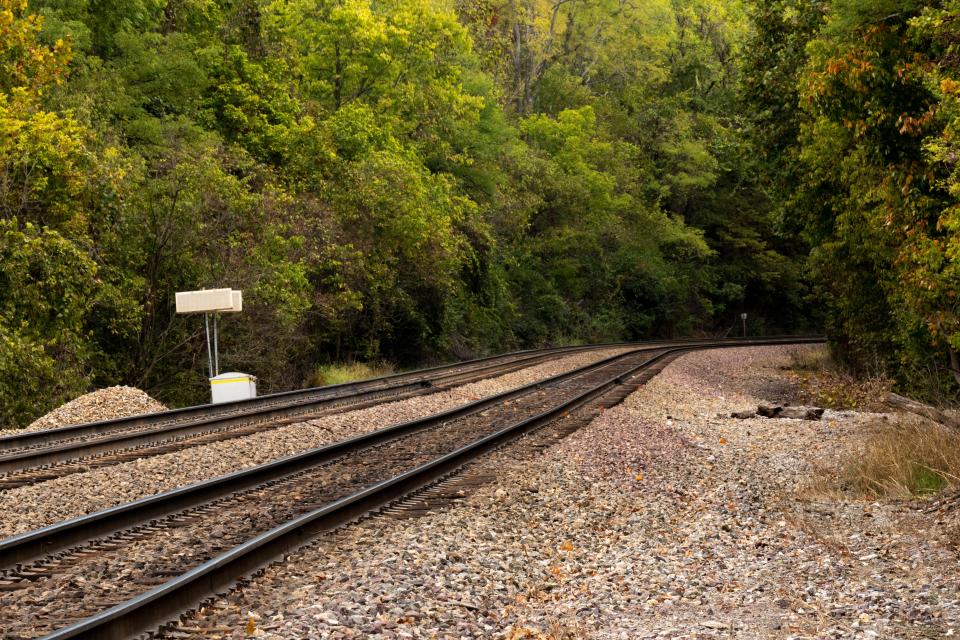
In Erlanger, the tracks pass behind the Erlanger Depot, billed as the last wooden depot between Cincinnati and Chattanooga.
Norfolk Southern wanted to tear that down sometime in the 1980s, an on-site sign says. The Erlanger Historical Society saved it and turned it into a museum in 1990.
As in Ludlow, a caboose sits next to the museum, with a city park and picnic shelter on its other side.
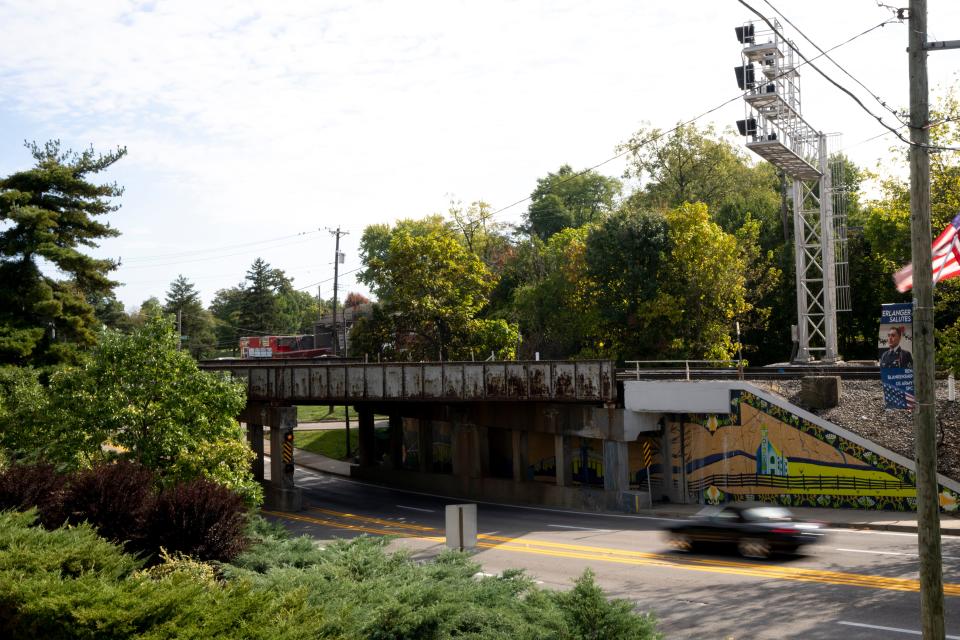
Tiny Robbins earns place in rail history
From Northern Kentucky, the line sticks close to U.S. 25 as it makes its way to the next big stop – Georgetown, one of two intermodal terminals on the route. Like the one at the Gest Street Yard, shipping containers and truck trailers are off-loaded there for the next leg of their journeys.
From Georgetown, the line passes through the center of Lexington, and continues through small towns beyond. Among them is Robbins, Tennessee, with a 2020 population of 254. That’s just south of where workers drove the final spike for the Cincinnati Southern Railway on Dec. 10, 1879. Travel on the route began the next year.
The Cincinnati Southern Railway hits its southernmost point in Chattanooga. A newspaper writer christened the earliest train on the route the Chattanooga Choo Choo – immortalized, in 1941, by a Glenn Miller Orchestra song of the same name.
This article originally appeared on Cincinnati Enquirer: Where are Cincinnati Southern Railway tracks exactly?

